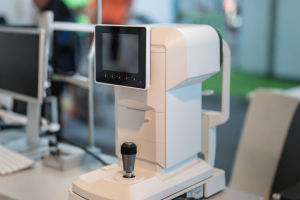For some, everyday noises—shouting, sirens, or even clinking cutlery trigger extreme discomfort or even pain.
This heightened auditory sensitivity is not a matter of irritability or personal preference but is rooted in identifiable medical phenomena.
Conditions such as hyperacusis, misophonia, and phonophobia provide clinical frameworks for understanding these symptoms. Though often misunderstood or dismissed, these disorders can severely impair social and occupational functioning. Neurologists are now uncovering how dysfunction in central auditory pathways contributes to this debilitating hypersensitivity.
Hyperacusis: Beyond the Ear, Into the Brainstem
Hyperacusis is characterized by an exaggerated response to ordinary environmental sounds. Importantly, this condition is not linked to heightened hearing acuity but rather to impaired auditory gain control in the central nervous system. The medial olivocochlear reflex, which typically modulates auditory input at the level of the cochlear nucleus, may be dysfunctional.
A recent study emphasized abnormal thalamocortical connectivity in patients with idiopathic hyperacusis. Functional MRI scans revealed hyperactivity in the auditory cortex, particularly in response to neutral sound stimuli, suggesting a loss of central habituation mechanisms.
Misophonia: The Sound of Emotion Dysregulation
Unlike hyperacusis, misophonia is distinguished by intense emotional and physiological reactions to specific trigger sounds—often chewing, tapping, or breathing. Dr. Sukhbinder Kumar, a prominent researcher in misophonia neurobiology, states, trigger sounds in misophonia elicit hyperactivity in the anterior insula and heightened connectivity with the amygdala, reflecting an aberrant assignment of salience to otherwise neutral stimuli."
The response is not to volume, but to the type of sound, implying a neuropsychiatric component. Patients describe a fight-or-flight response, and elevated autonomic activity including heart rate and galvanic skin response has been documented during trigger exposure.
Misophonia is now being recognized as a distinct entity in some neuropsychiatric taxonomies, with ongoing discussion on whether it belongs to the obsessive-compulsive spectrum or sensory processing disorders.
Phonophobia: Where Anxiety and Auditory Reflexes Converge
Phonophobia typically emerges in the context of migraines or neurological hyperexcitability. It is characterized by a fear-based reaction to sound, often involving anticipatory anxiety and avoidance behavior. This condition appears frequently in pediatric neurology, especially among children with autism spectrum disorder (ASD) and generalized sensory defensiveness.
Neurophysiological studies, report increased responsiveness in the trigeminal-cervical complex and thalamic relay centers, particularly during migraine episodes. The auditory system's lower threshold for activation in such patients aligns with findings of hyperresponsiveness in cortical evoked potentials.
Neuroplasticity and Sound Tolerance
There's growing interest in how neural plasticity influences auditory tolerance. Patients with long-standing tinnitus or those receiving cochlear implants sometimes develop transient hyperacusis, suggesting a maladaptive recalibration of cortical sound mapping.
A recent study indicating that central gain enhancement, originally proposed in tinnitus pathophysiology, also underlies some forms of sound intolerance. The brain, in response to reduced auditory input or damage, overcompensates by amplifying incoming signals, which can spill over into the perception of normal sounds as intolerable.
Diagnostic Pathways: Clinical Challenges in Sound Intolerance
Diagnosing auditory hypersensitivity involves a complex blend of audiological testing, neurological evaluation, and psychiatric screening. Pure tone audiometry often yields normal thresholds, complicating early detection. Loudness Discomfort Level (LDL) testing remains a standard tool, but lacks specificity.
Advances in quantitative electroencephalography (qEEG) are beginning to identify unique cortical signatures in hyperacusis and misophonia, potentially paving the way for objective biomarkers.
Current and Emerging Treatments: Multidisciplinary Approaches
Therapeutic options are often symptomatic and vary depending on the subtype:
- Cognitive Behavioral Therapy (CBT) has shown moderate efficacy in misophonia by targeting the emotional reactivity circuits.
- Sound therapy using filtered noise or low-volume auditory exposure is frequently employed in hyperacusis to recalibrate central gain.
- Pharmacological trials are underway involving GABAergic agents and glutamate modulators, aiming to normalize excitatory-inhibitory balance in the auditory cortex.
Loud sound intolerance is not a singular entity, but a spectrum of neurologically mediated disorders with distinct etiologies and clinical profiles. Increased understanding of auditory-limbic integration, sensory gating, and cortical excitability is reshaping how the medical field approaches these conditions.
Rather than attributing patient complaints to anxiety or behavioral issues, physicians are now equipped to recognize the neurobiological underpinnings of auditory hypersensitivity and to engage in targeted management strategies.


